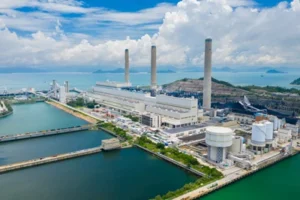
Many facility engineers are interested in the possibilities of using UV-C light to help prevent the spread of COVID-19. UV-C light has been shown to be a proven method controlling airborne infection. It works by destroying the outer protein coating of the SARS-Coronavirus. Right now, the effectiveness of UV-C on the novel SARS-CoV-2 (COVID-19) virus is unknown because there is limited published data about the wavelength, dose, and duration of UV-C radiation required to inactivate the SARS-CoV-2 virus. However, UV-C has been shown to kill other coronaviruses, such as SARS and MERS. It also kills bacteria, viruses, molds, and other pathogens, making it an excellent option for those who want to improve indoor air quality.
Unfortunately, UV-C light also presents a challenge to commercial HVAC systems. Although UV-C light has no effect on the metals used to make HVAC coils such as copper and aluminum, it does have the potential to break down coatings used to protect the coils from environmental corrosion that can be experienced in coastal, urban, agricultural, wastewater treatment, food processing, transit, and mining operating environments.
The most common tests used to determine the anti-corrosion performance of HVAC coatings, such as ASTM B-117 and ISO 12944-9, do not test against UV-C light. ISO 12944-9 is a cyclic test, alternating between 72 hours of UV exposure, 72 hours of salt spray, and 24 hours of freezing for 25 weeks, but the UV exposure is to UV-A light, not UV-C. ASTM B-117 doesn’t test against any kind of UV light at all.
The first HVAC coating that to be tested against UV-C light is Heresite’s P-413. The test, conducted in conjunction with Sanuvox Technologies, exposed P-413 coated panels to 1,500 hours of UV-C exposure. The results of the test demonstrated both the P-413 and P-413 + UC-5509 panels maintained their protective integrity after UV-C exposure. Although both panel sets experienced some fading, neither system had a loss of adhesion or change in flexibility.
Because of this extensive UV-C test, engineers can feel confident coating their HVAC coils with P-413 or P-413 with a UC-5500 topcoat in environments where indoor air quality is being improved through the use of UV-C light. P-413 was the first HVAC coating to meet the ISO 12944-9 Standard for severe offshore marine environments; although it certainly can be used in much less corrosive environments, particularly if UV-C sterilization is part of the HVAC system.